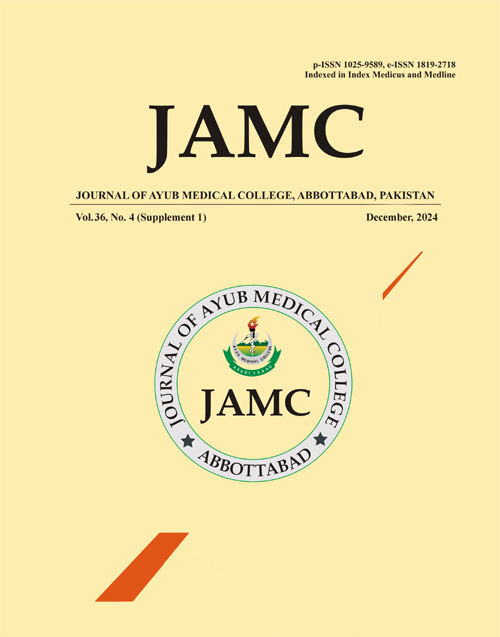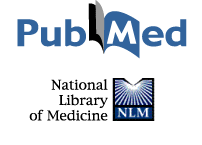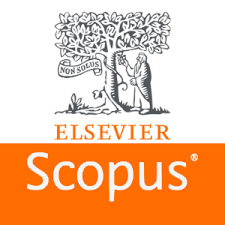OPTIMISING ENDODONTIC DISINFECTION: SEM EVALUATION OF APICAL PREPARATION SIZES COMBINED WITH PHOTODYNAMIC THERAPY IN APICAL THIRD OF MANDIBULAR FIRST MOLARS
DOI:
https://doi.org/10.55519/JAMC-S4-13181Keywords:
Photodynamic Therapy, Rotary endodontics, Diode Laser,, Apical Preparation SizeAbstract
Background: Eliminating microorganisms from the root canal system is crucial for successful treatment. Rotary nickel-titanium systems have revolutionized endodontics, but their ability to reduce microbial counts within dentinal tubules remains under-researched. Proper apical size selection is crucial for cleaning without compromising radicular dentine. Removal of smear layer is crucial as it obstructs disinfectant penetration. To enhance traditional irrigation, photodynamic therapy utilizing photosensitizers and lasers, presents a novel antimicrobial approach. This research aims to explore the correlation between different final apical preparation sizes combined with photodynamic therapy in smear layer removal, utilizing SEM on extracted molars. Methods: Forty-two decontaminated human mandibular first molars were divided into four groups based on different apical size preparations. All groups were prepared with different apical preparation sizes. All groups underwent photo-activated disinfection along with standard irrigation. A diode laser, combined with a photosensitizer, was used for smear layer removal, followed by SEM assessment. SEM images were evaluated for smear layer removal in the apical third using established criteria. Data analysis employed One Way Anova. Results: Group 3 proved most effective in smear layer removal, while group 1 was the least effective. Both group 1 and group 2 showed similar, minimal removal rates. The control group had a significant presence of smear layer. Statistical analysis revealed significant differences in smear layer removal efficacy across the groups, with a p-value <0.05. Conclusion: Photodynamic therapy effectively removes smear layer in apical third of the root when sufficiently prepared, serving as a valuable adjunct to conventional regimen.
References
1. Kaiwar A, Usha HL, Meena N, Ashwini P, Murthy CS. The efficiency of root canal disinfection using a diode laser: In vitro: study. Indian J Dent Res 2013;24(1):14–8.
2. Peralta-Mamani M, Rios D, Duarte MAH, Junior JFS, Honorio HM. Manual vs. rotary instrumentation in endodontic treatment of permanent teeth: A systematic review and meta-analysis. Am J Dent 2019;32(6):311–24.
3. Bergmans L, Van Cleynenbreugel J, Wevers M, Lambrechts PJ. Mechanical root canal preparation with NiTi rotary instruments: rationale, performance and safety. Status report for the American Journal of Dentistry. Am J Dent 2001;14(5):324–3.
4. Zehnder M. Root canal irrigants. J Endod 2006;32(5):389–98.
5. da Costa Lima GA, Aguiar CM, Câmara AC, Alves LC, Dos Santos FA, do Nascimento AE. Comparison of smear layer removal using the Nd: YAG laser, ultrasound, ProTaper Universal system, and CanalBrush methods: an in vitro study. J Endod 2015;41(3):400–4.
6. McDonald RE, Avery DR, Dean JA. Treatment of deep caries, vital pulp exposure, and pulpless teeth. Mcdonald Avery's Dent Child Adolesc 2010;9:343–65.
7. Demiryürek EÖ, Kalyoncuoğlu E, Duran E, Çoban AY, Çaycı YT. Efficacy of different instrumentation techniques on reducing Enterococcus faecalis infection in experimentally infected root canals. J Dent Sci 2014;9(1):23–8.
8. Violich D, Chandler NP. The smear layer in endodontics–a review. Int Endod J 2010;43(1):2–15.
9. Ghasemi N, Torabi ZS. The Effect of Photodynamic Therapy on the Smear Layer Removal: a Scanning Electron Microscopic Study. J Dent 2021;22(3):162.
10. Young G, Parashos P, Messer HJ. The principles of techniques for cleaning root canals. Aust Dent J 2007;52:S52–63.
11. Blank-Gonçalves LM, Nabeshima CK, Martins GH, de Lima Machado ME. Qualitative analysis of the removal of the smear layer in the apical third of curved roots: conventional irrigation versus activation systems. J Endod 2011;37(9):1268–71.
12. Abraham S, Vaswani SD, Najan HB, Mehta DL, Kamble AB, Chaudhari SD. Scanning electron microscopic evaluation of smear layer removal at the apical third of root canals using diode laser, endoActivator, and ultrasonics with chitosan: An in vitro study. J Conserv Dent 2019;22(2):149.
13. Udart M, Stock K, Graser R, Hibst RJ. Inactivation of bacteria by high-power 940 nm laser irradiation. Med Laser Appl 2011;26(4):166–71.
14. Parirokh M, Eghbal MJ, Asgary S, Ghoddusi J, Stowe S, Forghani F, et al. Effect of 808nm diode laser irradiation on root canal walls after smear layer removal: A scanning electron microscope study. Iran Endod J 2007;2(2):37.
15. Olivi M, Raponi G, Palaia G, Berlutti F, Olivi G, Valentini E, et al. Disinfection of root canals with laser-activated irrigation, photoactivated disinfection, and combined laser techniques: an ex vivo preliminary study. Photobiomodulation Photomed Laser Surg 2021;39(1):62–9.
16. Lee MT, Bird PS, Walsh LJ. Photo‐activated disinfection of the root canal: a new role for lasers in endodontics. Aust Endod J 2004;30(3):93–8.
17. Schäfer E, Schlingemann RJ. Efficiency of rotary nickel–titanium K3 instruments compared with stainless steel hand K-Flexofile. Part 2. Cleaning effectiveness and shaping ability in severely curved root canals of extracted teeth. Int Endod J 2003;36(3):208.
18. Kimura Y, Wilder-Smith P, Yonaga K, Matsumoto KJ. Treatment of dentine hypersensitivity by lasers: a review. J Clin Preiodontol Rev Artic 2000;27(10):715–21.
19. Martins MR. Efficacy of the Er, Cr: YSGG laser in the Laser Assisted Endodontic Treatment: Blind Randomized Clinical Trial: (Doctoral dissertation, Universidade do Porto (Portugal)); 2016.
20. Blakimé A, Henriques B, Silva FS, Teughels W, Özcan M, Souza JC. Smear layer removal and bacteria eradication from tooth root canals by Erbium lasers irradiation. Laser Dent Sci 2023;7(4):167–93.
21. Arslan H, Akcay M, Capar I, Saygili G, Gok T, Ertas HJ. An in vitro comparison of irrigation using photon‐initiated photoacoustic streaming, ultrasonic, sonic and needle techniques in removing calcium hydroxide. Int Endod J 2015;48(3):246–51.
22. Zand V, Milani AS, Amini M, Barhaghi MHS, Lotfi M, Rikhtegaran S, et al. Antimicrobial efficacy of photodynamic therapy and sodium hypochlorite on monoculture biofilms of Enterococcus faecalis at different stages of development. Photomed Laser Surg 2014;32(5):245–51.
23. Pirnat S. Versatility of an 810 nm diode laser in dentistry: an overview. J Laser Health Acad 2007;4(2):1–9.
24. Strazzi-Sahyon HB, Banci HA, Maltarollo TFH, Martinez CMT, Rocha EA, Figueiredo RB, et al. The impact of methylene blue photosensitizer, aPDT and a calcium hydroxide-based paste on the physicochemical and mechanical characteristics of root canal dentin and the bonding interface of fiberglass posts. J Photochem Photobiol B 2024;253:112878.
25. Sabino CP. Antimicrobial photodynamic inactivation mediated by methylene blue: analysis of inactivation kinetics and biochemical mechanisms: (Doctoral dissertation, Universidade de São Paulo) 2021.
26. Dalton BC, Ørstavik D, Phillips C, Pettiette M, Trope M. Bacterial reduction with nickel-titanium rotary instrumentation. J Endod 1998;24(11):763–7.
27. Manu U. Compact effect of EDTA, EGTA, Citric Acid and MTAD solutions on Smear Layer Removal and Microhardness on instrumented Root Canal Dentin: An In Vitro study: Sree Mookambika Institute of Dental Sciences, Kanyakumari; 2013.
28. Praveen M. A Comparative Evaluation of Intra-Radicular Smear Removal Efficacy of Chitosan, 17% EDTA and 10% Citric Acid used as Final Rinse in Irrigation Protocols: A field Emission Scanning Electron Microscopic study: JKK Nattraja Dental College and Hospital, Komarapalayam; 2016.
29. del Carpio-Perochena AE, Bramante CM, Duarte MA, Cavenago BC, Villas-Boas MH, Graeff MS, et al. Biofilm dissolution and cleaning ability of different irrigant solutions on intraorally infected dentin. J Endod 2011;37(8):1134–8.
30. Çobancı F, Kaya S, Adıgüzel Ö. Smear layer removal efficacy of various irrigation solutions with an ultrasonic activation system: an in vitro study. Turkish Endod J 2023;8(1):20–4.
31. Pintor AVB, Dos Santos MRM, Ferreira DM, Barcelos R, Primo LG, Maia LC. Does smear layer removal influence root canal therapy outcome? A systematic review. J Clin Pediatr Dent 2016;40(1):1–7.
32. Darrag AJ. Effectiveness of different final irrigation solutions on smear layer removal in intraradicular dentin. Tanta Dent J 2014;11(2):93–9.
33. Akshaya V. Comparing The Ability Of Two Herbal Irrigants On Smear Layer Removal Against 2.5% Sodium Hypochlorite And Chlorinedioxide-a SEM Analysis: Ragas Dental College and Hospital, Chennai; 2020.
34. Boutsioukis C, Kastrinakis E, Lambrianidis T, Verhaagen B, Versluis M, van der Sluis LW. Formation and removal of apical vapor lock during syringe irrigation: a combined experimental and Computational Fluid Dynamics approach. Int Endod J 2014;47(2):191–201.
35. Park E, Shen Y, Haapasalo MJ. Irrigation of the apical root canal. Endod Top 2012;27(1):54–73.
Downloads
Published
How to Cite
Issue
Section
License
Copyright (c) 2024 Hina Hammad, Fariha Irfan, Haroon Shah, Abdur Rehman, Chander Kumar, Muhammad Hammad, Syed Abrar Ali

This work is licensed under a Creative Commons Attribution-NoDerivatives 4.0 International License.
Journal of Ayub Medical College, Abbottabad is an OPEN ACCESS JOURNAL which means that all content is FREELY available without charge to all users whether registered with the journal or not. The work published by J Ayub Med Coll Abbottabad is licensed and distributed under the creative commons License CC BY ND Attribution-NoDerivs. Material printed in this journal is OPEN to access, and are FREE for use in academic and research work with proper citation. J Ayub Med Coll Abbottabad accepts only original material for publication with the understanding that except for abstracts, no part of the data has been published or will be submitted for publication elsewhere before appearing in J Ayub Med Coll Abbottabad. The Editorial Board of J Ayub Med Coll Abbottabad makes every effort to ensure the accuracy and authenticity of material printed in J Ayub Med Coll Abbottabad. However, conclusions and statements expressed are views of the authors and do not reflect the opinion/policy of J Ayub Med Coll Abbottabad or the Editorial Board.
USERS are allowed to read, download, copy, distribute, print, search, or link to the full texts of the articles, or use them for any other lawful purpose, without asking prior permission from the publisher or the author. This is in accordance with the BOAI definition of open access.
AUTHORS retain the rights of free downloading/unlimited e-print of full text and sharing/disseminating the article without any restriction, by any means including twitter, scholarly collaboration networks such as ResearchGate, Academia.eu, and social media sites such as Twitter, LinkedIn, Google Scholar and any other professional or academic networking site.










